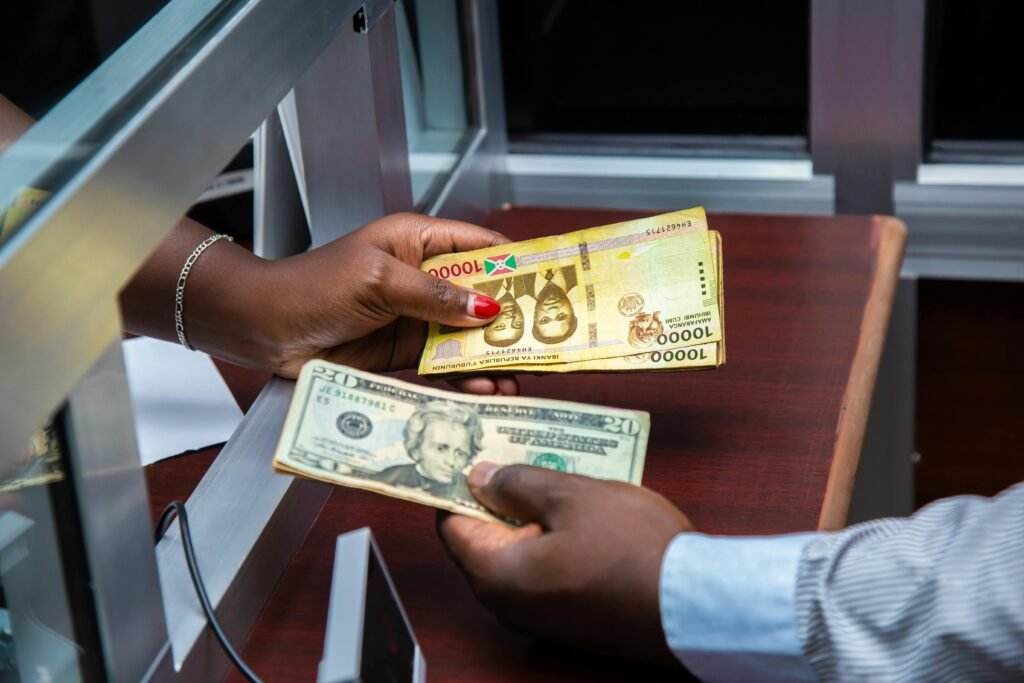Having trouble keeping your wallet organized? Look no further! This article will provide you with some simple yet effective tips on optimizing the organization of your cards and cash. From decluttering your wallet to finding the perfect wallet design, these practical suggestions will ensure that you never struggle to find the right card or bill again. Say goodbye to a chaotic wallet and hello to a well-organized and hassle-free financial companion!

This image is property of images.pexels.com.
1. Sorting and Categorizing Cards
Separating cards by type
When it comes to organizing and optimizing your wallet, the first step is to separate your cards by type. This means placing your credit cards, debit cards, identification cards, and membership cards into different sections. Separating the cards by type makes it easy to locate the one you need without having to sift through a stack of cards.
Sorting cards alphabetically
To further streamline your card organization, sorting your cards alphabetically can be incredibly helpful. This method allows you to find a specific card quickly, especially when you have multiple cards in each category. Whether you organize them by the name of the card issuer or by the type of card, such as Visa, Mastercard, or American Express, sorting alphabetically adds an additional layer of efficiency.
Creating categories for different cards
In addition to separating and sorting your cards, creating categories for different cards can help streamline your wallet organization even further. For example, you can have categories like “Financial” for credit and debit cards, “Identification” for your driver’s license and ID cards, and “Memberships” for loyalty and reward cards. By categorizing your cards, you can easily locate them based on their purpose or importance.
2. Utilizing Card Holders and Wallets
Choosing the right card holder
When it comes to organizing your cards, choosing the right card holder can make a significant difference. Card holders come in various sizes, materials, and designs, so it’s essential to find one that suits your needs and personal style. Look for card holders that have multiple compartments or slots to accommodate your various cards, and consider features like zippered closures or RFID-blocking technology for added security.
Using separate wallets for different types of cards
If you have a large number of cards or find it challenging to keep them all organized in one place, using separate wallets for different types of cards could be a game-changer. Consider having a dedicated wallet for your credit and debit cards, another for your identification cards, and a third for your membership and loyalty cards. This way, you can easily locate the wallet you need for a specific occasion without having to bring along unnecessary cards.
Keeping card holders and wallets organized
Once you have chosen your card holders and wallets, it’s crucial to keep them organized on an ongoing basis. Regularly decluttering and removing any unnecessary cards or receipts will ensure that you have easy access to the ones you need. Additionally, periodically cleaning and maintaining your card holders and wallets will help extend their lifespan and keep them looking fresh and presentable.

This image is property of images.pexels.com.
3. Digitizing Cards with Mobile Apps
Exploring mobile wallet apps
With advancements in technology, digitizing your cards has become increasingly popular. Mobile wallet apps, such as Apple Wallet and Google Pay, allow you to store digital copies of your cards on your smartphone. These apps offer convenience by eliminating the need to carry physical cards while still enabling you to make payments and access your membership details seamlessly.
Storing digital copies of cards
Once you have chosen the mobile wallet app that suits your needs, take the time to store digital copies of your cards within the app. This typically involves scanning the front and back of each card, entering any necessary details, and saving them securely within the app. Storing digital copies ensures that even if you forget your physical wallet at home, you still have access to your essential cards via your smartphone.
Utilizing password encryption and security features
When digitizing your cards with mobile wallet apps, it’s essential to prioritize security. Ensure that the app you choose has built-in password encryption and other security features to protect your digital cards from unauthorized access or theft. Additionally, consider using two-factor authentication for an added layer of protection. By taking these precautions, you can confidently rely on your digital wallet for your card management needs.
4. Efficient Placement of Cash
Separating different denominations
While cards have become the primary mode of payment for many, it’s still essential to have cash on hand for various situations. To optimize your cash organization, start by separating different denominations. Place your bills in order, with higher denominations at the front, so you can easily identify and access the desired amount without fumbling through your cash.
Using money clips or bands
To further streamline your cash organization, consider using money clips or bands to keep your bills together. Money clips are perfect for holding a small number of bills securely, while bands can be used to bundle larger amounts of cash. By keeping your bills neatly organized, you can avoid the hassle of loose or crumpled bills and facilitate quick and easy cash transactions.
Organizing cash by purpose or necessity
Another effective way to efficiently place your cash is to organize it by purpose or necessity. For example, you can designate separate sections for everyday spending cash, emergency cash, or specific expenses like groceries or dining out. This method allows you to quickly access the cash you need for a particular purpose without having to sort through all your bills.

This image is property of images.pexels.com.
5. Designating Pockets or Compartments for Cards and Cash
Assigning specific pockets for different cards
To optimize the organization of your wallet, assign specific pockets or slots for different types of cards. For example, you can designate a front pocket for frequently used cards like your primary credit card or ID. In contrast, less frequently used cards can be placed in inner pockets or slots. By giving each card a designated spot, you’ll always know exactly where to find it, saving you time and frustration.
Creating compartments for cash
In addition to designated card pockets, creating compartments within your wallet for cash can be advantageous. Many wallets have built-in money slots or zippered compartments specifically designed for cash. Utilize these features to separate your bills, ensuring they stay neatly organized and preventing them from accidentally falling out or mixing with other items in your wallet.
Utilizing designated slots for easy access
When choosing a wallet or card holder, look for one that has designated slots or easy-access compartments for items like IDs or frequently used cards. These slots are typically located on the outside of the wallet and enable you to quickly retrieve your most commonly used cards without having to open the entire wallet. Having these designated slots ensures that your essential cards are always easily within reach.
6. Using RFID Blocking Wallets
Understanding RFID technology risks
With contactless payment technology becoming increasingly prevalent, it’s essential to understand the potential risks associated with RFID (Radio Frequency Identification) technology. Some credit and debit cards, as well as identification cards, have RFID chips that can be vulnerable to unauthorized scanning or information theft. This makes it crucial to take proactive measures to protect your cards and personal information.
Choosing an RFID blocking wallet
To protect your cards from unauthorized scanning, consider investing in an RFID blocking wallet. These wallets are specially designed with materials that block or interfere with the radio waves used for RFID communication. By using an RFID blocking wallet, you can create a barrier that prevents potential hackers or identity thieves from accessing your card information without your knowledge or consent.
Protecting cards from unauthorized scans
When using an RFID blocking wallet, ensure that you place your cards in the designated RFID-protected compartments or slots. This maximizes the effectiveness of the wallet in blocking unauthorized scans. By taking this precautionary step, you can have peace of mind, knowing that your personal and financial information is secure and protected while going about your daily activities.
7. Periodic Cleanup and Maintenance
Regularly decluttering cards and cash
To maintain an organized and optimized wallet, it’s important to make regular cleanup and decluttering a habit. Take the time to review the cards and cash in your wallet periodically and remove any items that are no longer needed or have expired. This decluttering process prevents your wallet from becoming overloaded and ensures that you only carry what is essential and relevant.
Checking for damaged or expired cards
During your periodic cleanup, it’s crucial to check for damaged or expired cards. Bent or scratched cards may not work properly when inserted into card readers, and expired cards should be replaced promptly to avoid inconveniences or potential issues while making payments or accessing services. By proactive in checking for and replacing damaged or expired cards, you can maintain the functionality of your wallet.
Cleaning and maintaining wallets and card holders
In addition to decluttering, it’s equally important to clean and maintain your wallets and card holders regularly. Depending on the material, you can gently wipe them with a damp cloth or use specialized cleaning solutions to remove dirt and stains. Pay attention to any zippers, clasps, or seams that may require occasional lubrication or tightening to ensure their continued functionality and longevity.
8. Creating a Backup or Emergency Wallet
Preparing a secondary wallet for emergencies
While we may strive to maintain an organized wallet, emergencies can happen. To prepare for unforeseen circumstances like lost or stolen wallets, consider creating a backup or emergency wallet. This wallet should contain essential cards such as a backup credit or debit card, identification, and emergency contact information. By having a backup wallet readily available, you can quickly access the essentials even in challenging situations.
Including essential cards and cash
When assembling your backup or emergency wallet, ensure that you include all the essential items you would typically carry in your everyday wallet. This includes a spare credit or debit card, a secondary form of identification, a small amount of cash for immediate needs, and any other critical cards or documents you may require in an emergency. By having these items readily available, you can minimize the impact of a lost or stolen wallet.
Storing the backup wallet in a safe place
To ensure that your backup or emergency wallet is readily accessible yet secure, store it in a safe place. Consider keeping it in a different location from your primary wallet, such as a home safe, locked drawer, or hidden compartment. By storing it separately, you reduce the risk of losing both wallets simultaneously and increase the chances of recovering your backup wallet if needed.
9. Streamlining with Digital Wallets
Exploring digital wallet options
In addition to physical wallets, digital wallets offer a streamlined and convenient way to manage your cards and transactions. Explore digital wallet options like PayPal, Venmo, or Samsung Pay to see which one aligns best with your financial needs and preferences. Digital wallets allow you to link your credit and debit cards, make payments using your smartphone, and easily track your transactions.
Linking credit and debit cards to digital wallets
To fully harness the benefits of digital wallets, link your credit and debit cards to your preferred digital wallet app. This process typically involves securely inputting your card information into the app and verifying your identity and ownership. Once linked, you can enjoy the convenience of making payments with just a few taps on your smartphone, eliminating the need to carry physical cards.
Managing cards and transactions digitally
Once your cards are linked to a digital wallet, take advantage of the various features it offers to manage your cards and transactions digitally. Digital wallets often provide options to categorize your expenses, set spending limits, and receive notifications for each transaction. By actively managing your cards and transactions digitally, you can gain better control over your finances and easily track your expenses.
10. Personalizing and Customizing Wallets
Opting for wallets with customizable features
While functionality is crucial, personalizing your wallet can add a touch of uniqueness and reflect your personal style. Opt for wallets that offer customizable features such as removable inserts, interchangeable covers, or the option to add personalized labels or monograms. By making your wallet uniquely yours, you’ll enjoy using it and feel more connected to its contents.
Adding labels or tags to easily identify cards
To further personalize and optimize your wallet organization, add labels or tags to easily identify cards. Consider using small adhesive labels or colorful tags that can be attached to each card or placed in card slots or compartments. These visual cues make it quick and easy to locate the desired card, especially when you’re in a rush or need to access a specific card promptly.
Choosing unique wallet designs to stand out
Lastly, consider choosing unique wallet designs that stand out from the crowd. Whether you prefer bold patterns, vibrant colors, or minimalist aesthetics, selecting a wallet that reflects your personal taste can add a touch of joy and individuality to your daily routine. Apart from being a functional accessory, your wallet becomes an extension of your personal style and can evoke a sense of pride every time you use it.
In conclusion, optimizing the organization of your cards and cash is not only practical but also contributes to a more efficient and enjoyable everyday life. By separating and categorizing cards, using suitable card holders and wallets, digitizing cards with mobile apps, efficiently placing cash, designating pockets or compartments, considering RFID blocking wallets, performing periodic cleanup and maintenance, creating a backup/emergency wallet, streamlining with digital wallets, and personalizing and customizing your wallets, you can streamline your wallet organization and ensure that everything is easily accessible for your convenience. So take the time to implement these strategies and enjoy the benefits of an organized and efficient wallet system.
